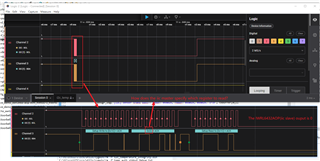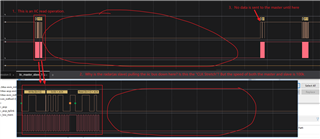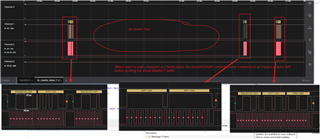Tool/software:
Hi,
My customer would like to make IWRL6432AOP as I2C slave, the master would initiate data transfer. when one frame process complete, radar would info master through GPIO, then master would initial I2C data read from radar slave. I found below link on I2C config as slave, it mentions the slave target address, my question is how to decide the memory address for I2C? Can u share one example include code work on radar as slave, and code work on master to read the radar slave?








